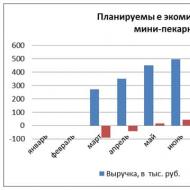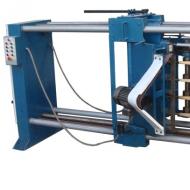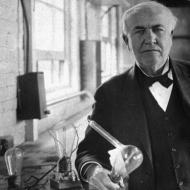
It is better to choose the size in film. Choosing a film for tinting. Choice: what to rely on
Although analogue photography has a marginal status these days, film is still shot and is still accepted at photo centers for development. Professional photographers have not abandoned analogue technology, which in some types of shooting does not have an equivalent alternative - landscape and interior photography, artistic photography. For amateur photographers, film opens up new horizons of creative exploration.
It is significant that many film enthusiasts come to it having shot digitally. They will name many reasons: the ability to change the “matrix” with each reel, the depth/volume of the film image, mechanical reliability. Choosing an analog camera is a complex issue and requires separate consideration, taking into account the camera format and price level. In the meantime, we will dwell on the issue that unites analog cameras of any class and manufacturer.
Film formats
Nowadays you can find films in the following formats on sale:
Narrow format. Type 135. Perforated film for narrow-film cameras in cassettes designed for 36 frames measuring 24x36 mm. There are amateur film cassettes designed for fewer frames. Some professional 35 mm films can be purchased “in bulk” in rolls for self-packing into cassettes.
- Medium format. Type 120 (roll film). Film 56mm wide (unperforated) has a fixed length, designed to produce 16 frames of 42.5x56mm, 12 frames of 56x56mm, or 10 frames of 56x70mm. The frame size depends on the type of camera (66, 645 or 67), and the most common in medium format is a square frame of 56x56 mm.
- Wide format. Sheet film for large format cameras (9x12 or 13x18 cm).
The easiest way to find 35mm film on sale. Problems may arise with roll film, and even residents of Moscow and St. Petersburg will sooner or later have problems with the purchase of sheet film. Western web stores www.adorama.com and www.bhphotovideo.com come to the rescue.
120 film is sold in reels with a protective rakcord - a paper tape that covers the entire length of the film, protecting it from light. This design has been used since the 20s of the 20th century. Back then, many cameras didn't have a frame counter. They were counted using a viewing window on the back wall of the chamber, covered with red glass. Additional protection from exposure was provided by a paper cord.
In addition to the 120 type, some medium format cameras can handle 220 type film. Its difference is that the length of the film is twice as long (and, accordingly, the number of frames). Nowadays, such film can only be purchased in Western online stores.
Sensitivity
Sensitivity is expressed in international standard units - ISO. 100 units of film is optimal for shooting on a sunny day, 50 units for studio work. Films of 400 or 800 units are useful indoors. As sensitivity increases, image detail decreases and graininess increases, which is usually considered a disadvantage. But high detail is not always needed. Unlike the noise on digital cameras, the noble grain of black and white films is often used for artistic purposes. For example, Rollei R3 film has large, beautiful grain.
Types of photographic films
Which film should I buy - color or black and white? The answer lies in the personal preferences and creative goals of the photographer. There is a great variety of films that differ in tonality, contrast, grain size and shape, and substrate thickness. In general terms, existing films can be divided into several types:
| Process | Intraspecific differences | Exceptions | |
|---|---|---|---|
| Black and white negative | D-76 (traditional) | Panochromatic/orthochromatic | Infrared |
| C-41 (Chromogenic) | Emulsion type - classic or t-grain | Ultra high resolution | |
| Colored | S-41 (Negative) | For daylight/artificial light | |
| E-6 (slide) | Live/neutral colors | slide films developed using the original process (e.g. Kodachrome) |
If you want to photograph with black and white film, but do not want to work with solutions and tanks, opt for chromogenic film, which is developed in photo centers using the standard C-41 laboratory process. “Pseudo-black and white” films are convenient for beginners and allow you to obtain consistently high-quality results. Possessing a very high latitude, they are optimal for genre photography, when there is often simply no time to accurately determine exposure. Like a color negative, chromogenic b/w film has almost indistinguishable grain, but there is one important caveat: photographs should be printed in the same way as from color negatives (hand printing on black and white paper will not produce high-quality results). The exception is Illford XP2 Super, during the development of which the possibility of manual optical printing was retained.
For artistic purposes, professional photographers who shoot in black and white prefer classic silver halide crystal film. As a rule, it is developed manually. There are also films on flat (T-Grain) crystals. Many people prefer time-tested options and claim that T-Grain gives a “plastic” tone. But this judgment is hardly justified. After all, the most modern Illford Delta 400 and Kodak T-Max 100 on flat crystals are not inferior in terms of drawing to the Illford HP5 or Kodak Tri-X, which were loved by the great photographers of the past.
Ultra-high-resolution films include Gigabitfilm, Adox and the domestic Tasma FN64. The most common of them - Gigabitfilm - has a special container with a special developer included in the kit. When using high-quality optics (Leica, Contax G-series), the film easily produces a resolution of 300 lines per millimeter. Not every scanner can pull out all the details, but manual printing allows you to get resolution at the medium format level.
For shooting in the IR range with an appropriate filter on the lens, only Rollei Infrared films can be found on sale. “Non-standard” films of the orthochromatic type (insensitive when developed to red light) and the Kodachrome slide, in the emulsion of which dyes enter during the development process, have gone out of use.
Color negative films, like black and white films, have excellent photographic latitude. Unlike slides, they are economical to use and easy to scan. The slide is unrivaled due to its excellent color rendition, lack of grain and detail unattainable for negative film and digital images. At the same time, it is inferior to the negative in terms of dynamic range, is extremely demanding in terms of exposure accuracy, and its development is often more expensive than the film itself. In professional photography of landscapes and interiors, the wide-format slide still has no analogues.
The VC or C index on negative film packaging indicates increased saturation and contrast, NC or S - more neutral. Slide films also vary in color rendering, but this distinction is more global, separating individual brands of slide film (for example, the super-saturated Fujichrome Velvia and the realistic Provia). Most slide films are designed for daylight/pulsed light temperatures and must be used with conversion filters when shooting indoors. Sometimes on sale there are slide films optimized for indoor lighting (Kodak Ektachrome 64T).
Transportation and storage
Expensive professional films, especially color films, are usually very demanding in terms of storage conditions, and it is not always possible to find a refrigerator for them away from home. For trips to hot countries or hiking trips, you can choose an intermediate option (for example, Fujicolor Superia Reala).
We also note that when transporting unshot/undeveloped films at airports during the inspection process, the radiation from X-ray scanners can lead to partial damage to the films. It is difficult to avoid such a check, but you can reduce your exposure if you carry films as part of your hand luggage, rather than in luggage, where the radiation is much higher. Manufacturers advise developing footage as quickly as possible. But this, of course, is not always possible. It is recommended to store the film in the refrigerator.
Top 20 most popular films
Black and white films:
Kodak T-Max BW 400CN is developed using the C-41 laboratory process. The most versatile b/w film. With a nominal sensitivity of 400 units, it allows you to shoot in the ISO range 25-800, while maintaining the standard development mode. Thanks to such an impressive photographic latitude, it forgives almost any exposure mistakes.
Illford PanF 50 Plus is ideal for studio portraits, macro, long exposure landscapes. Quite contrasting and fine-grained, it has a unique “soft” tonality. The “softness” will be further enhanced by the fine-grained Illford Perceptol developer and the one-step pull process (ISO 25).
Kodak T-Max 100 is suitable for everyday photography. High contrast and contour sharpness, fine grain, beautiful hard drawing. It is recommended to develop in the “native” T-Max or D-76.
Fuji Neopan Acros 100. Good tonal rendition and large photographic latitude are combined with moderate contrast, but the film is inferior to its peers in terms of detail. Gives good results in combination with Illford Microphen in concentrations up to 1+3. “Accelerates” to ISO 400.
- Rollei Retro 100 - film for portraits. Contrasting, but with a pleasant tonality and fine grain. Produced by Maco for Rollei. Disadvantages: thin backing and high curling, but the result is worth the effort. Developer - D-76, Maco LP-Cube, any liquid from Kodak.
Fomapan 100 is a Czech film that beginner photographers love due to its low price. Contrasting, but has a grain too high for such sensitivity and an inexpressive tonal pattern. For development, cheap liquid Fomadon LQN is optimal.
- Illford FP4. Nominal sensitivity 125 units. Pleasant tonality makes this film a good choice for portraits. The recommended fine-grain developer is Perceptol, liquid Maco Supergrain.
- Fortepan 200 is a cheap Hungarian-made b/w film with large and very beautiful grain and rich tonality. Moderately contrast, with good detail. Disadvantages - some carelessness in watering the emulsion and high curling.
- Kodak TRI-X 400 was very loved by the great photographers of the past. It is distinguished by high contrast and a “classic” pattern. It is best developed in liquid developers from Kodak. If you need to emphasize the grain, the “classic” development method works: TRI-X + Rodinal.
- Illford HP5 Plus is another film on which many masterpieces were shot. High sharpness, beautiful and fairly large grain. Nominal sensitivity 400 units. Traditionally used for push process (up to 1600 units).
- Illford Delta 400. Modern universal film on flat crystals, optimal for various artistic tasks. Unlike Delta 100, it has high contrast and a hard pattern. Push process up to 1600 units. Developer: D-76/ID-11.
- Illford Delta 3200 combines the latest four-layer flat crystal emulsion with beautiful grain. Nominal sensitivity - 1250 units. The branded Microphen is recommended as a developer. The film is designed for push processing. Depending on the development mode, it can be used in the range of 800-12800 ISO.
The Rollei R3 has large, beautiful grain and beats the Delta 3200 in terms of sharpness and contrast. Available with sensitivity of 400 and 800 units. The optimal result is obtained when pushing one or two steps.
Color films:
Fujicolor Superia Reala. 100 speed color negative film, ideal for use away from home. Provides correct color rendition and high detail, suitable for various scenes, undemanding to storage conditions.
- Kodak Portra 160 NC/VC. One of the most popular negative films for photographing people. There are options with neutral (NC) and “live” (VC) color rendering, but only one of them (NC) allows you to get a stable result.
- Fujicolor Pro 400H. Color negative film that produces excellent results when shooting portraits in low light conditions. Has high contrast.
- Fujichrome Velvia 100F is a well-known slide film that has earned recognition for its rich color rendition. The new version, which replaces Velvia 50, features more natural colors. It copes well with shooting at long exposures (several minutes without disturbing the color balance). Soft tonality, good dynamic range for a slide.
- Fujichrome Provia 100F. This film is said to produce more natural colors than Velvia. However, at longer shutter speeds there is a shift to cold tones. When scanning on inexpensive scanners, it gives better results than Velvia.
- Fujichrome Astia 100F was created for portrait and fashion photography. It has neutral color rendering, moderate contrast, and is somewhat inferior to its counterparts from the Fujichrome family in terms of detail.
- Kodak Ektachrome E100G is popular among professional photographers. It has a large photo latitude for a slide, natural color rendition and low contrast. Astia is not inferior in rendering flesh tones. The E100-GX version has warmer color rendering and is often used when photographing people.
original article http://pro-format.ru/films/ilford1/item2/
By growing vegetables and herbs in greenhouse conditions, you can get a much larger harvest than in open ground, since greenhouses allow you to do this all year round. The profitability of this agricultural business is greatly influenced not only by the labor invested, but also by capital, the bulk of which is spent on purchasing a greenhouse. And since the price of such ready-made structures is usually very high, they are often beyond the means of an ordinary summer resident.
To solve this problem, there is an excellent alternative - a greenhouse made of film. Such structures are divided into frame and frameless. But both options allow you to save your budget significantly, since their production does not require expensive material or special skills. In a word, these are easy-to-use options, so you can build film greenhouses without any problems even with your own hands.
The structure of a frame greenhouse includes two main components: a frame, which is made of reinforcement, pipes, thick wire or timber, and a film covering. In frameless structures there is also a film, but the ridges serve as support for it. In any case, the coating remains the main material on which both the durability of the structure and the efficiency of the greenhouse as a whole will depend.
Basic requirements for film coatings for greenhouses

At the stage of purchasing material, many are faced with the question of what kind of film is needed for a greenhouse in order for it to turn out correctly.
There are the following generally accepted properties by which high-quality greenhouse coatings should be selected:
- light scattering ability;
- good permeability of carbon dioxide and oxygen;
- good ultraviolet permeability;
- ability to retain heat perfectly;
- frost resistance;
- moisture resistance;
- tensile strength;
- seasonal durability;
- elasticity;
- transparency;
- antistatic;
- weather resistance.
In addition to the listed parameters, the greenhouse coating should not have sagging or drop-forming properties. In this regard, in order for the cultivated crops to bring a rich harvest, the choice of material must be taken with full responsibility. Fortunately, modern versions are now being produced, which, unlike previous variations, meet all the necessary requirements.
Types of coatings for greenhouses and their characteristics
Since our domestic market now offers many different types of coverings for greenhouses, before starting their construction, you first need to decide which covering material to give preference to.
The choice will directly depend on the specifics of the design, and if the question arises which film is best for a greenhouse, you first need to familiarize yourself with the existing types and their features.
Ordinary polyethylene film

This is the most common covering material used for, since its price is considered the lowest. This film protects plants well from the wind and transmits sunlight well, and it also has the necessary moisture-resistant properties.
However, this material does not retain heat well. In addition, condensation forms on it, which contributes to the formation of mold, so when using polyethylene, the greenhouse must be constantly ventilated. Also, this type of film is short-lived. In this regard, such shelter is used, as a rule, only for one season.
These products can be sold both in rolls with a width of 1 to 3 m, and in the form of a sleeve. The last option can be used in different ways.
So, if you cut a sleeve, you will get a fabric wider than 3 m. You can also pull the sleeve itself directly onto the frame, provided that the design matches its width.
Note!
Polyethylene is available in various thicknesses, however, the service life of the greenhouse will not depend on its density. Therefore, if the question arises of which film to choose for a greenhouse, then you should not purchase thick, expensive products, since the investment will not justify itself anyway.
Polyvinyl chloride film

Some vegetable growers confuse this covering option with cellophane, since in appearance they are very similar to each other. However, these are completely two different materials. They differ significantly in density and other qualities.
Polyvinyl chloride film is much more expensive than its analogues because it is produced using special technology. But its high price is fully justified by its merits.
So, such a coating for a greenhouse has the following properties:
- transmits about 90% of light and approximately 80% of ultraviolet radiation (it contains UV protectors);
- blocks up to 95% of infrared radiation;
- retains heat well;
- easy to clean with water;
- service life can reach up to 5-7 years;
- has good frost resistance, moisture resistance, elasticity and strength;
However, the installation of polyvinyl chloride material should be treated with great care, since it tends to stretch. Thus, the disadvantages of this option include high cost and tendency to sag.
Polyethylene reinforced film

This material is made by fusing fiberglass, polypropylene or polyethylene into its structure. This process is called reinforcement, due to which it acquires good heat-retaining and “breathing” properties.
In addition, this film is much stronger than ordinary polyethylene. This quality is determined not by the thickness, but by the density of the material. The most optimal option for the average greenhouse is considered to be from 120 g/m2 to 200 g/m2.
The service life of reinforced film ranges from 2 to 4 seasons. This is an excellent option for winter greenhouses. The structure of this material contains tiny holes, thanks to which it is possible to do without ventilation vents in greenhouses.
Light converting film

This type of material appeared relatively recently. It contains coloring additives that convert the ultraviolet spectrum into infrared radiation, which is known to accelerate the processes of photosynthesis and plant growth.
The light-transforming agent has excellent protective properties that protect plants from morning frosts, overheating, and also from excess UV. This is the best option for the southern regions. A distinctive external feature of this material is its color shade.
Perennial films

There are also improved films for greenhouses, which are manufactured using various modern technologies. Not only UV stabilizers can be added to them, but also all kinds of antifog, antistatic agents, and absorbers. All these substances protect the material from pesticides and, therefore, from premature deterioration.
Advice!
Typically, the material kit should include instructions that state what the greenhouse shelter consists of.
If a dilemma arises about how to choose a film for a greenhouse, then knowing what it is made of will definitely help you make your choice.
In a word, when purchasing material, be sure to pay attention to this aspect.
Perennial coatings for greenhouses include films such as:
- foamed;
- air bubble (lasts up to 3 years);
- polyamide (lasts about 2 seasons);
- copolymer ethylene vinyl acetate and others.
How to extend the service life of a greenhouse coating

In order for the material to last a long time, you need to follow the following recommendations, which are recommended by experts:
- During installation and operation, the coating should be protected from scratches and tears.
- should be as smooth as possible.
- It is imperative to treat the base of the greenhouse with antiseptics.
- The film should be installed at an air temperature of 5 to 15 degrees Celsius.
- You should not place the fold of the film on the “ridge” of the greenhouse.
Conclusion
Now, having become familiar with the types of coatings and having a general understanding of their features, when the question arises of which film to choose for a greenhouse, any vegetable grower will be able to focus his attention on the option that is optimal for his greenhouse. From the video in this article you will learn some more nuances on this topic!
Until recently, film was the most popular material for arranging greenhouses. Today it is being replaced by glass and polycarbonate, which are superior in many respects, but are not low in price. If the budget is limited, then you can grow the crop in a greenhouse covered with film, but you still need to know how to choose it. Film to film is different: Manufacturers offer both the simplest polyethylene and more practical options, such as reinforced, polyvinyl chloride and stabilized. Sellers strive to pass off cheap material as a more expensive analogue, because some species are very similar in appearance. Under these conditions, how can you choose film for a greenhouse, not overpay and be confident in its quality?
No. 1. Advantages and disadvantages of greenhouse film
Previously, only plastic film was used to cover greenhouses. At the moment, summer residents are offered more advanced analogues, in which some of the disadvantages are less pronounced. In general, all types of films that are used for greenhouses are characterized by general pros and cons.
Main advantages:
Main disadvantages:
- low durability. When choosing plastic film, you should be prepared that it will need to be changed next season. More expensive analogues will have to be replaced after 2-3 seasons;
- low resistance to sunlight, which leads to rapid destruction of the material, but in some films this disadvantage is not so pronounced;
- Condensation accumulates on the surface of the film, which is harmful to most crops grown in the heifer. This drawback was avoided by hydrophilic films, in the production of which special additives are used;
- accumulation of electrostatic charge, which helps attract dust, and this, in turn, reduces transparency. Manufacturers are also trying to combat this disadvantage by introducing special additives.
Many summer residents also complain that the film stretches and sag, so they have to constantly tighten it. But the presence of so many significant disadvantages still does not make the material less popular, because it the cheapest way to equip a greenhouse in the country, and many believe that it is more profitable to change the coating once a year than to immediately spend money on buying expensive polycarbonate. 
No. 2. Main types of films for greenhouses
The entire variety of films for greenhouses can be divided into the following types:

No. 3. Polyethylene film
The main advantage is low cost. The film transmits about 80% of thermal radiation, so daytime heat is poorly retained at night. Properly installed high-quality polyethylene film will last no more than a season, and is unlikely to survive the winter, since temperature changes, wind and snow will destroy the material. Even the thickest films are not particularly durable. 

Polyethylene film very soft, so it must be transported and installed very carefully. Even the smallest cut will soon “grow”, which will negate all efforts to arrange the greenhouse.
The material is sold in rolls 1.2-3 m wide; it can be a single-layer fabric or a sleeve. In the second case, the material can be cut along the seam and a wider sheet can be obtained, or you can cover the greenhouse with a sleeve, although you should not count on a significant increase in durability. The bend of the sleeve is considered the weakest point and is destroyed first, so it is better to immediately strengthen it with tape. 

No. 4. Reinforced film
Reinforced film differs from conventional polyethylene film by the presence of a peculiar frame, made of fiberglass, pressed, twisted or stretched polyethylene or polypropylene, the thickness of the frame threads is 0.29-0.32 mm. Polyethylene, as a rule, is used more durable, sometimes with additives for greater resistance to sunlight. The main load is borne by the frame, so a greenhouse with such a coating becomes resistant to wind, snow and even hail. The film can protect seedlings even in frosts down to -5 0 C. 
The material will last in the greenhouse for more than a year, it is usually enough for three seasons, but some manufacturers talk about a service life of 5 or even 7 years, but much depends on the characteristics of the film and the climatic conditions of the region. Reinforced film more maintainable: holes can be sealed with tape; they do not tend to spread to the entire canvas. The main characteristic of the material is not thickness, but density. The most common material is considered to have a density of 120-200 g/m2. There is a film on sale with holes in the cells, which provides the greenhouse with proper tightness, but does not allow the air to be “preserved” in it.
The durability and strength of the reinforced film turns out to be more at a high price. In addition, the light transmission of this material is slightly lower than that of a conventional stabilized film, and dust is very difficult to wash off due to the relief, which also harms transparency.
No. 5. PVC films for greenhouses
Polyvinyl chloride films are one of the best options for arranging greenhouses. It is an elastic and durable material that can last from 2-3 seasons up to 6-7 depending on operating conditions, care and climate. As a rule, light-converting and stabilizing additives are added to the composition.
The material is permeable up to 90% light, 80% ultraviolet radiation and blocks up to 95% of infrared radiation, which means that at night and during frosts the greenhouse will be warmer than in the same one made of plastic film. This is a very significant advantage of the material.
The disadvantage of the material is the price, which is 2-3 times higher than the cost of the polyethylene analogue, but taking into account the fact that there is no need to buy a new film and install it every season, this disadvantage cannot be called too significant. Another nuance - polyvinyl chloride is highly attracts dust, but it’s also easy to wash off. The frost resistance of the material is low; at temperatures below -15 0 C the film becomes too fragile, so it will be mandatory. 
No. 6. Polyethylene films with special additives
If you introduce specific substances into polyethylene, you can slightly improve its performance. Depending on the additives, the following types of material are distinguished:
- stabilized film produced with the addition of substances that increase resistance to sunlight. The service life increases by 2-3 times, and the price also increases. The material may have an orange or pinkish tint, but this is not necessary. Externally, stabilized and regular polyethylene films are the same, so you need to carefully look at the packaging and labeling;
- light converting film“knows how” to convert hard ultraviolet radiation, harmful to plants, into infrared and red radiation, which increase productivity. All this is possible thanks to the phosphor additive, but in order for the material to last for a long time, it is necessary that the composition also contains stabilizing substances. To make sure that you really have a light-converting film in front of you, you need to shine it with an ultraviolet lamp, and the light from the lamp should change to red;

- heat retaining film has a matte whitish tint. It weakly transmits thermal radiation, so the temperature in the greenhouse will be 1-3 0 C higher than in similar other types of film. Due to this, early harvests can be increased by 10-30%, saving on heating costs. The service life of the film is about 9 months, the material has antistatic and hydrophilic properties;

- stabilized hydrophilic film allows you to solve the “drop” problem characteristic of other types of material. Flat-drip condensate forms on this film in the form of a continuous layer, so there is no negative effect on plants. Light transmission is high, the ability to transmit thermal radiation is 30-35%, so it will be warm in such greenhouses;

- bubble wrap strongly resembles the one used to package fragile goods. It has good light transmission, and the level of thermal insulation is comparable to polycarbonate. The strength is low, with the exception of special types of film, but the material is suitable for growing early crops in a small greenhouse;

- foam film consists of a monolithic and foamed layer of polyethylene, transmits 70% of light, retains heat well, suitable for the construction of greenhouses intended for vegetative propagation of plants;
- copolymer ethylene vinyl acetate It has a decent level of strength, retains heat well, is resistant to punctures, wind loads, frost, and is hydrophilic. High light transmittance (up to 92%) can cause overheating on hot summer days. Durability – up to 3 years;
- photodestructible film destroyed after a certain period (20, 45 and 60 days). Used for frameless shelters and mulching.
Despite the stated service life, some experts recommend changing the film every three years, as it still becomes cloudy. If the material has retained its integrity, it can be used for other purposes.
You can also find films in the production of which several additives were used at once - this is the best option. But often, under the guise of special films, ordinary polyethylene films are issued, so it does not interfere look at certificates and markings.
According to GOST 10354-82, stabilized film for greenhouses and hotbeds is marked ST, stabilized light-converting film – SIC. You can also use film for greenhouses, which is marked with the letter H: this is a stabilized or unstabilized film for the manufacture of household products. 
No. 7. Film density and thickness
The denser and thicker the film, the better it will cope with negative environmental factors. In the case of conventional polyethylene film, thickness has little effect on durability, but when it comes to stabilized materials, this factor is more important.
Externally, it is impossible to distinguish between films with a thickness of 200 and 100 microns, which is what unscrupulous sellers take advantage of. To protect yourself from a bad purchase, it is worth remembering that thicker film weighs more: linear meter of film 200 microns weighs 530 g, 150 microns – 400 g, 120 microns – 320 g, 100 microns – 260 g and 80 microns - 210 g. For greenhouses, it is better to choose a film with a thickness of 150-200 microns. 
No. 8. Film color
It is better to choose transparent film– it lets in more light. To obtain material of different shades, food coloring is usually added to the composition, which tends to fade under the rays of the sun, so there is no point in it. If the paint is persistent, then less light will penetrate into the greenhouse, which will entail a decrease in yields and the need to use. 
No. 9. Film Manufacturers
If the choice is made on ordinary plastic film, then the risk of running into a low-quality product is reduced. More fakes are found in the category of more expensive types of films: for example, stabilized film can be passed off as regular film. In any case, it is better to trust trusted manufacturers and take a good look at the accompanying documentation and labeling.
Film from such manufacturers is of sufficient quality.
There is no clear answer to the question of which film is best to use for a greenhouse - each type has its own strengths and weaknesses. When deciding which film to choose for a greenhouse, many gardeners focus on the cost of the covering material. And its price, in turn, will depend on whether it is a perennial film for greenhouses or not, and on the quality and technical characteristics of the material.
Film for greenhouses: main characteristics of the material
Greenhouse film is a good alternative to glass, and modern coatings have many advantages over it. They are cheaper, easier to install and replace if fragments are damaged. Their use takes the cultivation of any crop to a new level thanks to properties that glass does not have - the ability to diffuse sunlight and let air through.
Types of film for greenhouses
Polyethylene film comes in various types - unstabilized and stabilized heat-impermeable film, PVC film, reinforced, copolymer and film with additives.
Polyethylene film for greenhouses without stabilization is a regular covering film, the most affordable. Its service life in greenhouses is up to 4-6 months, that is, it is one-season. The material simply becomes obsolete - it stretches and tears. In addition, condensation accumulates on its inner surface - “drops”, which are harmful to plants, and dust settles on the outer surface, which reduces transparency, and as a result, there is a lack of lighting in the greenhouse. 
A greenhouse made of polyethylene film with a UV stabilizer is more advanced. This film is resistant to UV radiation and does not transmit IR radiation, which means it is more durable and heat-saving. Also, its significant difference is that the resulting drip condensate does not fall on the plants, but rolls down - this is a big plus. In addition, it is dust-repellent, and its transparency remains throughout its service life. Can last up to 5 years. Typically available in the following colors: green greenhouse film, orange, yellow or blue greenhouse film. 
This is a frost-resistant film of a whitish milky color, which is capable of retaining heat 2-3% better than conventional films. It also repels dust and dirt, remains transparent and has a hydrophilic effect. Its disadvantage is its fragility, service life is 7-8 months, and its advantage is a significant increase in yield in greenhouses covered with it. 
Did you know? Thanks to the heat-retaining film, the yield of vegetable crops can increase from 10 to 25%.
Today it is the most durable, elastic and long-lasting film. The average service life is 7 years. Transparent dense PVC film is permeable to infrared rays. This means that the temperature in the greenhouse does not drop in cold weather. But its use reduces the permeability of UV rays to 15-20%, it also becomes contaminated relatively quickly with dust (it needs to be washed frequently), and can sag, which requires adjustment and periodic tightening of the film. 
Important! The sagging film must be tightened without delay. Otherwise it will break.
Reinforced film for greenhouses
This is a stabilization film with increased strength - it is reinforced with polyethylene thread, which increases its service life to 1.8-2 years. But at the same time, its light permeability decreases by 12-13%. In the southern regions this is not very significant, but for the northern regions it will be a minus. 
One of the most commonly used films. Copolymer film is quite elastic, durable, translucent, frost-resistant, hydrophilic and wear-resistant. Retains its properties for up to 3 years. Available in widths from 150 to 600 cm, thickness – 0.09–0.11 mm. This is the optimal thickness that is recommended. A thicker polyethylene film, in principle, is not needed; it will not be economically beneficial. 
Important! At high air temperatures outside, overheating of plants in a greenhouse covered with a copolymer film is possible.
Films with additives
All of the films listed, except for the regular one, are films with additives, based on simple polyethylene film. Besides these, there are also other types of films. So, black film is a material for mulching, used as mulch. Light-diffusing coating for greenhouses– white in color, capable of scattering the sun’s rays, creating partial shade, and preventing overheating of plants inside the greenhouse. Acrylic film– “breathable” and at the same time heat-saving.
Main characteristics when choosing a film
Choose a film for greenhouses with a high density in the range of 160-230 microns. The size can be different - from 1.2 to 6 m in width and up to 100 (!) m in length. You need to choose a film from a trustworthy seller and take material from a reputable manufacturer. Because it is difficult to determine visually whether the product is of high quality, meeting all the parameters, or not. Today, most experts recommend using films from Russian manufacturers with an excellent price/quality ratio.
Did you know?The most commonly used brands of films from Russian companies are “Polysvetan”, “Redline”, “Antiplesen”, “Urozhay”.
Experts advise that when choosing a film for a greenhouse, focus on its functional purpose. If you need it for a mini-greenhouse for seedlings, then a disposable budget option - regular film - is quite suitable. It will be inexpensive, and next year you can buy new material for seedlings. And if you need a film for continuous use all year round, then you need to look at the price and choose a more wear-resistant and agrotechnically advanced material. Also, when choosing, be sure to take into account the region (northern, southern) and the site itself - if it is a hill and frequent winds, then you need to take a more durable material. If the climatic conditions are relatively calm or the site is in a lowland, that is, protected by the relief, then consider average options that are suitable for the cost.
There are 4 types of automotive vinyl films:
Colorless film
- glossy film
- matte film
- carbon film
The colorless film is designed to protect the car body. A colorless film is used to cover the bumpers and hood of a car to protect them from mechanical damage.
Matte and glossy films not only protect the car body, but also give the car body a special appearance.
Carbon film comes in two types: two-dimensional and three-dimensional. 2D carbon film has a similar structure to carbon fiber. The three-dimensional film is completely similar to the structure of carbon fiber, both in appearance and in feel.
Vinyl film brands from the following companies have won well-deserved distribution in different countries: Hexis, KPMF, 3M, Orafol. Thanks to a wide selection of films, it has now become easy to create an exclusive look for your car.
HEXIS products(French) produces film in rolls 1.37 and 1.52 meters wide. The products of this company produce many new products and are developing new technologies and developing new types of vinyl.
Some of the exclusive types of HEXIS films include:
Vinyl film - 3D black glossy carbon. Glossy 3D Carbon Film is very similar to the famous 3D Carbon from 3M, but due to its gloss and fine texture it is more similar to natural carbon.
Vinyl film - pearlescent (pearl effect). This film even from slight light shimmers from violet to golden.

Vinyl black matte polymer film with a velvety surface.


Manufacturer of 3M films(Japan) constantly surprises with its technological solutions. Vinyl films have already been created with a Comply adhesive layer - for better application of the film to the car body. Using this layer, car wrapping is also possible for novice craftsmen. The Comply layer is the presence of small grooves to remove air directly from under the adhesive base, this prevents the formation of bubbles.
Films with an adhesive layer have also been created - Controltac, which ensures the movement of the film on the car body without using a soap solution for the wet application method. With slight pressure on the film, it begins to stick well.
The most popular from 3M is a film that imitates carbon. 3M carbon fiber of the DI-NOC™ series feels like natural carbon to the touch.
Advantages: DI-NOC™ Carbon stretches well, does not allow air to appear under the film, and all this is thanks to the Comply layer.
The most convenient and successful for high-quality pasting is considered to be 3M film of the Scotchprint 1080 series. The thickness of this film is 2 times less than DI-NOC film, thanks to this it stretches well and makes it easier to paste even the smallest body parts. Scotchprint 1080 contains the same Controltac layer, making it noticeably easier to apply large film sizes.
ORAFOL company(German) has stable, high quality. Orafol produces products with the following names: ORACAL, ORAGUARD, ORAJET, ORALITE and ORAMASK. Cast vinyl film - ORACAL 970 - has become popular for body wrapping. It is equipped with a RapidAir adhesive layer, which is an analogue of the 3M Comply layer. Allows you to glue film without bubbles. No less popular series: ORACAL 975 carbon, cast film ORAJET 3951.
Many types of films and KPMF company(England). This company has high quality films and is in high demand. For full body wrapping, KPMF K88000 series with a thickness of 100 microns is perfect; it has excellent stretch and there are a large number of shades to choose the desired color.
Film prices fluctuate noticeably, for example:
Oracal - from 20 to 35 USD
KPMF - from 35 to 44 USD
3M Scotchcal - from 22 to 65 USD
Advantages of vinyl film:
It is economical, protects the surface from minor scratches, provides maximum protection from ultraviolet radiation, thus preserves the color from fading, the film hides minor imperfections, and thanks to this film you can change the style of the car whenever you wish.
Disadvantages of vinyl film:
Peeling off the film in case of poor-quality pasting of the body. Dust and dirt look much worse on vinyl wrap than on a painted car. If you do not completely wrap the car, then when you remove the film, the places where it was pasted will differ from the places where it was not, since the paint does not fade under the film.















